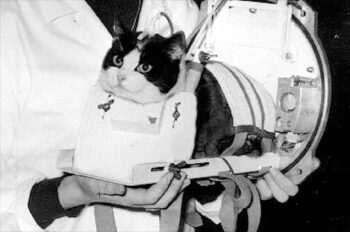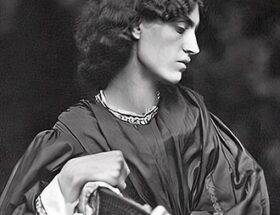
Early Life
George Gordon Byron was born on 22 January 1788, in a house on 16 Holles Street in London. Byron was the son of Captain John “Mad Jack” Byron and his second wife, Catherine Gordon, heiress of the Gight estate in Aberdeenshire, Scotland.
Byron’s father had previously seduced the married Marchioness of Carmarthen and, after she divorced her husband, he married her. His treatment of her was described as “brutal and vicious” and she died after giving birth to two daughters, only one of whom survived (Byron’s half-sister Augusta).
To claim his second wife’s estate in Scotland, Byron’s father took the additional surname “Gordon”, becoming “John Byron Gordon”, and he was occasionally styled “John Byron Gordon of Gight”.
At the age of 10 he inherited the English Barony of Byron of Rochdale , becoming “Lord Byron”.
Byron’s father married his second wife for the same reason that he married his first, her fortune. Byron’s mother had to sell her land and title to pay her new husband’s debts and, in the space of two years, the large estate had been squandered, leaving the former heiress with an annual income in trust of only £150.
In a move to avoid his creditors, Catherine accompanied her profligate husband to France in 1786, but returned to England at the end of 1787 to give birth to her son on English soil.
He was christened at St Marylebone Parish Church as “George Gordon Byron”, after his maternal grandfather George Gordon of Gight, in 1779.
Catherine moved back to Aberdeenshire in 1790, where Byron spent his childhood. His father soon joined them in their lodgings in Queen Street, but the couple quickly separated. Catherine regularly experienced mood swings and bouts of melancholy, which could be partly explained by her husband’s continuingly borrowing money from her.
As a result, she fell even further into debt to support his demands. It was one of these importunate loans that allowed him to travel to Valenciennes, France, where he died in 1791.
When Byron’s great-uncle, the “wicked” Lord Byron, died on 21 May 1798, the 10-year-old boy became the sixth Baron Byron of Rochdale and inherited the ancestral home, Newstead Abbey, in Nottinghamshire.
Education
Byron received his early formal education at Aberdeen Grammar School, and in August 1799 entered the school of Dr. William Glennie, in Dulwich. Placed under the care of a Dr. Bailey, he was encouraged to exercise in moderation but could not restrain himself from “violent” bouts in an attempt to overcompensate for his deformed foot. His mother interfered with his studies, often withdrawing him from school. As a result his classical studies were neglected and he lacked discipline.
His lack of moderation was not restricted to physical exercise. Byron fell in love with Mary Chaworth, whom he met while at school, and she was the reason he refused to return to Harrow in September 1803. In Byron’s later memoirs, Mary Chaworth is portrayed as the “first object of his adult sexual feelings.”
Byron finally returned in January 1804, to a more settled period which saw the formation of a circle of emotional involvements with other Harrow boys, which he recalled with great vividness: “My school friendships were with me passions (for I was always violent).”
The most enduring of those was with John FitzGibbon, 2nd Earl of Clare. Letters to Byron in the John Murray archive contain evidence of a previously unremarked if short-lived romantic relationship with a younger boy at Harrow, John Thomas Claridge.
The following autumn, he went up to Trinity College, Cambridge, where he met and formed a close friendship with the younger John Edleston. About his “protégé” he wrote, “He has been my almost constant associate since October 1805, when I entered Trinity College. His voice first attracted my attention, his countenance fixed it, and his manners attached me to him for ever.”
In his memory Byron composed Thyrza, a series of elegies. The poem “The Cornelian” was written about the cornelian that Byron received from Edleston.
Byron spent three years at Trinity College, engaging in sexual escapades, boxing, horse riding and gambling.[30] Also while at Cambridge he formed lifelong friendships with men such as John Cam Hobhouse, who initiated him into the Cambridge Whig Club and Francis Hodgson, a Fellow at King’s College, with whom he corresponded on literary and other matters until the end of his life.
Early Career
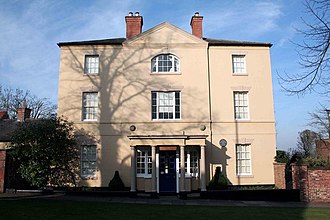
While not at school or college, Byron lived with his mother in Southwell, Nottinghamshire. While there, he cultivated friendships with Elizabeth Bridget Pigot and her brother John, with whom he staged two plays for the entertainment of the community.
During this time, with the help of Elizabeth Pigot, who copied many of his rough drafts, he was encouraged to write his first volumes of poetry. Fugitive Pieces was printed by Ridge of Newark, which contained poems written when Byron was only 17.
However, it was promptly recalled and burned on the advice of his friend, the Reverend J. T. Becher, on account of its more amorous verses, particularly the poem To Mary.
Hours of Idleness, which collected many of the previous poems, along with more recent compositions, was the culminating book. The savage, anonymous criticism this received in the Edinburgh Review prompted his first major satire, English Bards and Scotch Reviewers (1809). It was put into the hands of his relation, R. C. Dallas, requesting him to “…get it published without his name.”
Alexander Dallas gave a large series of changes and alterations, as well as the reasoning for some of them. He also stated that Byron had originally intended to prefix an argument to this poem and Dallas quoted it.
Although the work was published anonymously by April, R. C. Dallas wrote that “you are already pretty generally known to be the author.”
After his return from travels he again entrusted R. C. Dallas as his literary agent to publish his poem Childe Harold’s Pilgrimage, which Byron thought of little account. The first two cantos of Childe Harold’s Pilgrimage were published in 1812 and were received with acclaim.
In his own words, “I awoke one morning and found myself famous.”[39] He followed up his success with the poem’s last two cantos, as well as four equally celebrated “Oriental Tales”: The Giaour, The Bride of Abydos, The Corsair, and Lara. About the same time, he began his intimacy with his future biographer, Thomas Moore.
Travel to the East
Byron racked up numerous debts as a young man, owing to what his mother termed a “reckless disregard for money”. He had planned to spend early 1808 cruising with his cousin, George Bettesworth, who was captain of the 32-gun frigate HMS Tartar. Bettesworth’s death at the Battle of Alvøen in May 1808 made that impossible.
From 1809 to 1811, Byron went on the Grand Tour, then customary for a young nobleman. He travelled with Hobhouse for the first year and his entourage of servants included Byron’s trustworthy valet, William Fletcher.
The Napoleonic Wars forced him to avoid most of Europe, and he instead turned to the Mediterranean. The journey provided the opportunity to flee creditors, as well as a former love, Mary Chaworth (the subject of his poem from this time, “To a Lady: On Being Asked My Reason for Quitting England in the Spring”).
Letters to Byron from his friend Charles Skinner Matthews reveal that a key motive was also the hope of homosexual experience. Attraction to the Levant was probably also a reason, as he had read about the Ottoman and Persian lands as a child and was attracted to Islam (especially Sufi mysticism).
Byron began his trip in Portugal from where he wrote a letter to his friend Mr Hodgson in which he describes his mastery of the Portuguese language, consisting mainly of swearing and insults. Byron particularly enjoyed his stay in Sintra that is described in Childe Harold’s Pilgrimage as “glorious Eden”. From Lisbon he travelled overland to Seville, Jerez de la Frontera, Cádiz and Gibraltar, and from there by sea on to Malta and Greece.
While in Athens, Byron met 14-year-old Nicolo Giraud, with whom he became quite close and who taught him Italian. It has been suggested that the two had an intimate relationship involving a sexual affair. Byron sent Giraud to school at a monastery in Malta and bequeathed him a sizeable sum of £7,000 pounds sterling. The will, however, was later cancelled.
In 1810 in Athens, Byron wrote “Maid of Athens, ere we part” for Teresa Makri, a 12-year-old girl he had fallen in love with .
Byron made his way to Smyrna, where he and Hobhouse cadged a ride to Constantinople on HMS Salsette. While Salsette was anchored awaiting Ottoman permission to dock at the city, on 3 May 1810 Byron and Lieutenant Ekenhead, of Salsette‘s Marines, swam the Hellespont.
Byron commemorated this feat in the second canto of Don Juan. He returned to England from Malta in July 1811 aboard HMS Volage.
Years 1811-1816
Byron became a celebrity with the publication of the first two cantos of Childe Harold’s Pilgrimage (1812).
He rapidly became the most brilliant star in the dazzling world of Regency London. He was sought after at every society venue, elected to several exclusive clubs, and frequented the most fashionable London drawing-rooms
During this period in England he produced many works, including The Giaour, The Bride of Abydos (1813), Parisina, and The Siege of Corinth (1815). On the initiative of the composer Isaac Nathan, he produced in 1814–1815 the Hebrew Melodies (including what became some of his best-known lyrics, such as “She Walks in Beauty” and “The Destruction of Sennacherib”).
Involved at first in an affair with Lady Caroline Lamb and with other lovers and also pressed by debt, he began to seek a suitable marriage, considering – amongst others – Annabella Millbanke.
However, in 1813 he met for the first time in four years his half-sister, Augusta Leigh. Rumours of incest surrounded the pair and Augusta’s daughter Medora (b. 1814) was suspected to have been Byron’s. To escape from growing debts and rumours, Byron pressed his determination to marry Annabella, who was said to be the likely heiress of a rich uncle.
They married on 2 January 1815 and their daughter, Ada, was born in December of that year. However, Byron’s continuing obsession with Augusta as well as his continuing sexual escapades with actresses made their marital life a misery. Annabella considered Byron insane and in January 1816 she left him, taking their daughter, and began proceedings for a legal separation.
Their separation was made legal in a private settlement in March 1816. The scandal of the separation, the rumours about Augusta, and ever-increasing debts forced him to leave England in April 1816, never to return.
Life abroad (1816-1824)
After this break-up of his domestic life, Byron left England and never returned. He journeyed through Belgium and continued up the Rhine river. In the summer of 1816 he settled at the Villa Diodati by Lake Geneva, Switzerland, with his personal physician, John William Polidori.
There Byron befriended the poet Percy Bysshe Shelley and Shelley’s future wife, Mary Godwin. He was also joined by Mary’s stepsister, Claire Clairmont, with whom he had had an affair in London.

Kept indoors at the Villa Diodati by the “incessant rain” of “that wet, ungenial summer” over three days in June, the five turned to reading fantastical stories, including Fantasmagoriana, and then devising their own tales. Mary Shelley produced what would become Frankenstein, or The Modern Prometheus, and Polidori produced The Vampyre, (the progenitor of the Romantic vampire genre). The Vampyre was the inspiration for a fragmentary story of Byron’s, “A Fragment”.
Italy
Byron wintered in Venice, pausing his travels when he fell in love with Marianna Segati (in whose Venice house he was lodging) and who was soon replaced by 22-year-old Margarita Cogni; both women were married.
Cogni left her husband to move into Byron’s Venice house. Their fighting often caused Byron to spend the night in his gondola. When he asked her to leave the house, she threw herself into the Venetian canal.
n 1816, Byron visited San Lazzaro degli Armeni in Venice, where he acquainted himself with Armenian culture with the help of the monks belonging to the Mechitarist Order. With the help of Father Pascal Aucher he learned the Armenian language and attended many seminars about language and history.
He co-authored Grammar English and Armenian in 1817 (an English textbook written by Aucher and corrected by Byron) and A Grammar Armenian and English in 1819 (a project he initiated of a grammar of Classical Armenian for English speakers) where he included quotations from classical and modern Armenian.
Byron later participated in the compilation of the English Armenian dictionary (Barraran angleren yev hayeren, 1821) and wrote the preface, in which he explained Armenian oppression by the Turkish pashas and the Persian satraps and the Armenian struggle of liberation. His two main translations are the Epistle of Paul to the Corinthians, two chapters of Movses Khorenatsi‘s History of Armenia, and sections of Nerses of Lambron’s Orations.
His fascination was so great that he even considered a replacement of the Cain story of the Bible with that of the legend of Armenian patriarch Haik. He may be credited with the birth of Armenology and its propagation.
His profound lyricism and ideological courage has inspired many Armenian poets, the likes of Ghevond Alishan, Smbat Shahaziz, Hovhannes Tumanyan, Ruben Vorberian, and others.
In 1817, he journeyed to Rome. On returning to Venice, he wrote the fourth canto of Childe Harold. About the same time, he sold Newstead and published Manfred, Cain, and The Deformed Transformed.
The first five cantos of Don Juan were written between 1818 and 1820. During this period he met the 18-year-old Countess Guiccioli, who found her first love in Byron, and asked her to elope with him.
Led by love for the local aristocratic, young, and newly married Teresa Guiccioli, Byron lived in Ravenna from 1819 to 1821. Here he continued Don Juan and wrote the Ravenna Diary and My Dictionary and Recollections. Around this time he received visits from Percy Bysshe Shelley, as well as from Thomas Moore, to whom he confided his autobiography or “life and adventures” (which Moore, Hobhouse, and Byron’s publisher, John Murray, burned in 1824, a month after Byron’s death).
Of Byron’s lifestyle in Ravenna we know more from Shelley, who documented some of its more colourful aspects in a letter:
Lord Byron gets up at two. I get up, quite contrary to my usual custom … at 12. After breakfast we sit talking till six. From six to eight we gallop through the pine forest which divide Ravenna from the sea; we then come home and dine, and sit up gossiping till six in the morning. I don’t suppose this will kill me in a week or fortnight, but I shall not try it longer. Lord B.’s establishment consists, besides servants, of ten horses, eight enormous dogs, three monkeys, five cats, an eagle, a crow, and a falcon; and all these, except the horses, walk about the house, which every now and then resounds with their unarbitrated quarrels, as if they were the masters of it… . [P.S.] I find that my enumeration of the animals in this Circean Palace was defective … . I have just met on the grand staircase five peacocks, two guinea hens, and an Egyptian crane. I wonder who all these animals were before they were changed into these shapes.
In 1821 Byron left Ravenna and went to live in the Tuscan city of Pisa, to which Teresa had also relocated. From 1821 to 1822, Byron finished Cantos 6–12 of Don Juan at Pisa and in the same year he joined with Leigh Hunt and Shelley in starting a short-lived newspaper, The Liberal, in whose first number The Vision of Judgment appeared.
For the first time since his arrival in Italy, Byron found himself tempted to give dinner parties. His guests included the Shelleys, Edward Ellerker Williams, Thomas Medwin, John Taaffe, and Edward John Trelawny.
Byron decided to have his own yacht and engaged Trelawny’s friend, Captain Daniel Roberts, to design and construct the boat. Named the Bolivar, it was later sold to Charles John Gardiner, 1st Earl of Blessington, and Marguerite, Countess of Blessington, when Byron left for Greece in 1823.
Byron attended the funeral of Shelley, which was orchestrated by Trelawny, after Williams and Shelley drowned in a boating accident on 8 July 1822. His last Italian home was Genoa. While living there he was accompanied by the Countess Guiccioli and the Blessingtons.
Lady Blessington based much of the material in her book, Conversations with Lord Byron, on the time spent together there. This book became an important biographical text about Byron’s life just prior to his death.
Greece
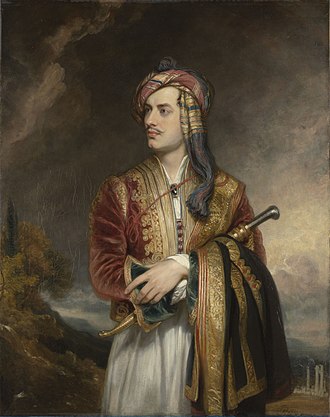
Byron was living in Genoa when, in 1823, while growing bored with his life there, he accepted overtures for his support from representatives of the movement for Greek independence from the Ottoman Empire.
At first, Byron did not wish to leave his 22-year-old mistress, Countess Teresa Guiccioli, who had abandoned her husband to live with him. Ultimately Guiccioli’s father, Count Gamba, was allowed to leave his exile in the Romagna under the condition that his daughter return to him, without Byron.
At the same time that the philhellene Edward Blaquiere was attempting to recruit him, Byron was confused as to what he was supposed to do in Greece, writing: “Blaquiere seemed to think that I might be of some use-even here;—though what he did not exactly specify”.
With the assistance of his banker and Captain Daniel Roberts, Byron chartered the brig Hercules to take him to Greece. When Byron left Genoa, it caused “passionate grief” from Guiccioli, who wept openly as he sailed away to Greece. The Hercules was forced to return to port shortly afterwards. When it set sail for the final time, Guiccioli had already left Genoa.
On 16 July, Byron left Genoa, arriving at Kefalonia in the Ionian Islands on 4 August. His voyage is covered in detail in Donald Prell’s Sailing with Byron from Genoa to Cephalonia. After taking Byron to Greece, the ship returned to England, never again to venture into the Mediterranean.
Byron initially stayed on the island of Kefalonia, where he was besieged by agents of the rival Greek factions, all of whom wanted to recruit Byron to their own cause. Byron spent £4,000 of his own money to refit the Greek fleet.
When Byron travelled to the mainland of Greece on the night of 28 December 1823, Byron’s ship was surprised by an Ottoman warship, which did not attack his ship as the Ottoman captain mistook Byron’s boat for a fireship. To avoid the Ottoman Navy, which he encountered several times on his voyage, Byron was forced to take a roundabout route and only reached Missolonghi on 5 January 1824.
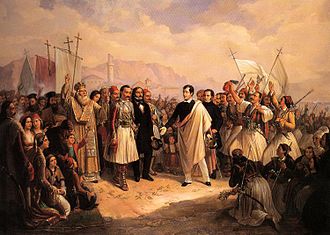
After arriving in Missolonghi, Byron joined forces with Alexandros Mavrokordatos, a Greek politician with military power. Byron moved to the second floor of a two-story house and was forced to spend much of his time dealing with unruly Souliotes who demanded that Byron pay them the back-pay owed to them by the Greek government. Byron gave the Souliotes some £6,000 pounds.
Byron was supposed to lead an attack on the Ottoman fortress of Navpaktos, whose Albanian garrison were unhappy due to pay arrears and who offered to put up only token resistance if Byron was willing to bribe them into surrendering.
However, Ottoman commander Yussuf Pasha executed the mutinous Albanian officers who were offering to surrender Navpaktos to Byron and arranged to have some of the pay arrears paid out to the rest of the garrison.
Byron never led the attack on Navpaktos because the Souliotes kept demanding that Byron pay them more and more money before they would march. Byron grew tired of their blackmail and sent them all home on 15 February 1824.
At the same time, Guiccioli’s brother, Pietro Gamba, who had followed Byron to Greece, exasperated Byron with his incompetence as he consistently made expensive mistakes. For example, when asked to buy some cloth from Corfu, Gamba ordered the wrong cloth in excess, leading to the bill being 10 times higher than what Byron wanted.
Byron wrote about his right-hand man: “Gamba—who is anything but lucky—had something to do with it—and as usual—the moment he had—matters went wrong”.
To help raise money for the revolution, Byron sold his estate Rochdale Manor in England, which raised some £11,250 pound sterling. This led Byron to estimate that he now had some £20,000 pounds at his disposal, all of which he planned to spend on the Greek cause.
Byron wrote to his business agent in England, “I should not like to give the Greeks but a half helping hand”. Byron found himself besieged by various people, both Greek and foreign, who tried to persuade Byron to open up his pocketbook to support them. By the end of March 1824, the so-called “Byron brigade” of 30 philhellene officers and about 200 men had been formed, paid for entirely by Byron.
Leadership of the Greek cause in the Roumeli region was divided between two rival leaders: a former Klepht (bandit), Odysseas Androutsos and a wealthy Phanariot merchant, Alexandros Mavrokordatos.
Byron used his prestige to attempt to persuade the two rival leaders to come together to focus on defeating the Ottomans. At same time, other leaders of the Greek factions like Petrobey Mavromichalis and Theodoros Kolokotronis wrote letters to Byron telling him to disregard all of the Roumeliot leaders and to come to their respective areas in the Peloponnese.
This drove Byron to distraction, with him complaining that the Greeks were hopelessly disunited and spent more time feuding with each other than trying to win independence. Byron’s friend Edward John Trelawny had aligned himself with Androutsos, who ruled Athens, and was now pressing for Byron to break with Mavrokordatos in favour of backing his rival Androutsos.
Byron wrote with disgust about how one of the Greek captains, former Klepht Georgios Karaiskakis, attacked Missolonghi on 3 April 1824 with some 150 men supported by the Souliotes as he was unhappy with Mavrokordatos’s leadership, leading to a brief bout of inter-Greek fighting before Karaiskakis was chased away by 6 April.
Byron adopted a nine-year-old Turkish Muslim girl called Hato whose parents had been killed by the Greeks, whom he ultimately sent to safety in Kefalonia, knowing well that religious hatred between the Orthodox Greeks and Muslim Turks was running high and that any Muslim in Greece, even a child, was in serious danger.
During this time, Byron pursued his Greek page, Lukas Chalandritsanos, with whom he had fallen madly in love, but the affections went unrequited. Byron was infatuated with the teenage Chalandritsanos, whom he spoiled outrageously, spending some £600 (the equivalent to about £24,600 in today’s money) to cater to his every whim over the course of six months and writing his last poems about his passion for the Greek boy, but Chalandritsanos was only interested in Byron’s money.
When the famous Danish sculptor Bertel Thorvaldsen heard about Byron’s heroics in Greece, he voluntarily resculpted his earlier bust of Byron in Greek marble.
Death
Mavrokordatos and Byron planned to attack the Turkish-held fortress of Lepanto, at the mouth of the Gulf of Corinth. Byron employed a fire-master to prepare artillery and he took part of the rebel army under his own command, despite his lack of military experience. Before the expedition could sail, on 15 February 1824, he fell ill, and bloodletting weakened him further.
He made a partial recovery, but in early April he caught a violent cold, which therapeutic bleeding, insisted on by his doctors, aggravated. This treatment, carried out with unsterilised medical instruments, may have caused him to develop sepsis. He contracted a violent fever and died in Missolonghi on 19 April.
Major Works
- Hours of Idleness (1807)
- English Bards and Scotch Reviewers (1809)
- Childe Harold’s Pilgrimage, Cantos I & II (1812)
- The Giaour (1813)
- The Bride of Abydos (1813)
- The Corsair (1814)
- Lara, A Tale (1814)
- Hebrew Melodies (1815)
- The Siege of Corinth (1816)
- Parisina (1816)
- The Prisoner of Chillon (1816)
- The Dream (1816)
- Prometheus (1816)
- Darkness (1816)
- Manfred (1817)
- The Lament of Tasso (1817)
- Beppo (1818)
- Childe Harold’s Pilgrimage (1818)
- Don Juan (1819–1824; incomplete on Byron’s death in 1824)
- Mazeppa (1819)
- The Prophecy of Dante (1819)
- Marino Faliero (1820)
- Sardanapalus (1821)
- The Two Foscari (1821)
- Cain (1821)
- The Vision of Judgment (1821)
- Heaven and Earth (1821)
- Werner (1822)
- The Age of Bronze (1823)
- The Island (1823)
- The Deformed Transformed (1824)
- Letters and journals, vol. 1 (1830)
- Letters and journals, vol. 2 (1830)
